Leigh Donlan reports from the ODC Walking Distance Dance Festival in San Francisco:
With summer just around the corner, ODC flung their doors wide open this weekend for their third annual Walking Distance Dance Festival in San Francisco’s Mission District. Three dance programs at various ODC locations – all within walking distance of each other – provided a diverse sampling of dance genres from seven choreographers at four different locations in ODC’s 17th and Shotwell area, including Mission Bowling Club and Store Front Lab. Ballet to the People had the pleasure of experiencing Program B: Chitresh Das Dance Company’s exquisite Excerpts of Bhakti: A Women’s Liberation through Love, and Garrett + Moulton Productions’ tour de force, A Show of Hands.
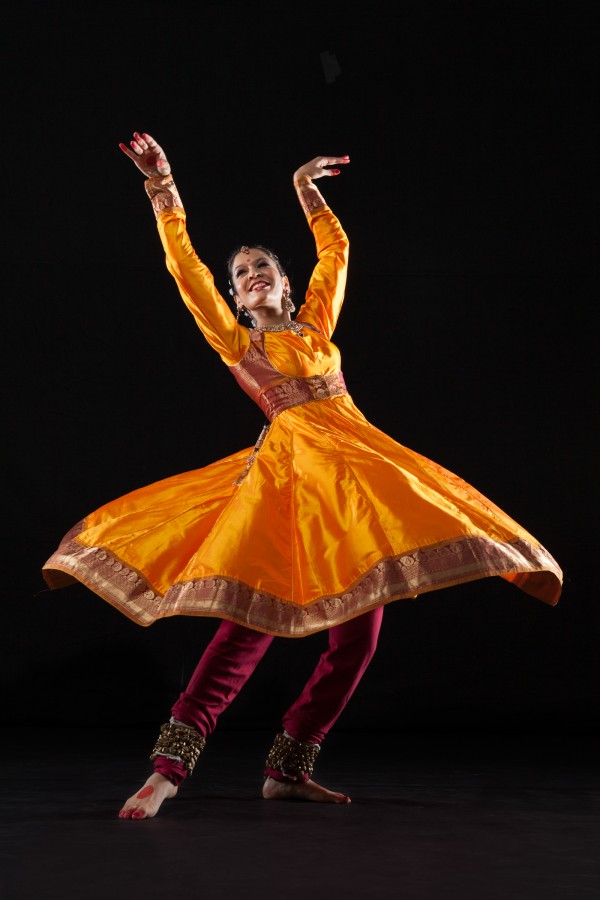
Rachna Nivas of Chitresh Das Dance Company in EXCERPTS OF BHAKTI: A WOMEN’S LIBERATION THROUGH LOVE (Photo: Margo Moritz)
At ODC’s Dance Commons in Studio B, Rachna Nivas danced a traditional solo Kathak, accompanied by her highly skilled musicians – Samrat Kakkeri on tabla, Ben Kunin on sarod, Pankaj Misra on sarangi and vocalist Labonee Mohanta. From the Sanskrit katha, meaning story, this tale was based on the life of a 16th century princess, Meerabai, who defied the patriarchal oppression of arranged marriage by devoting herself solely to Krishna, the deity of consciousness, who embodies divine love and joy. Glowing in a traditional lehenga-choli of golden skirt and top, Nivas radiated power and grace.
Mohanta narrated the tale as Nivas slipped in and out of characters with ease, from embattled kings to sacrificial widows upon their husband’s funeral pyre (sati). In the story, Meerabai refuses to throw herself on said pyre after her husband’s death, though women who took such an oppositional stance were often forced upon the pyre anyway. Flames were projected onto an upstage curtain as Nivas movingly portrayed the sacrificed women, swaying mournfully with bound wrists, as her feet were apparently set afire, the bells on her ankles trembling in a wild rage, then deadly silent. As princess Meerabai, Nivas returns to Krishna and prays for women to be saved from such future duress. A silver Krishna statue was lit from above and brightly reflected its light on the princess as she danced this prayer, a simple but profound moment.
The use of light is one of the most important elements in this piece, thanks to the clever lighting design of David Robertson. In the final scene, Meerabai is now free to be with Krishna for the rest of her days. She dances joyously in Krishna’s reflective light, casting a long, dark shadow behind her as she holds a final pose, playing an invisible flute (Krishna used a flute – a symbol of freedom – to preach love.) The shadow suggests that the princess has finally fully merged with her beloved Krishna, as we hear the words “I am the soul, not the body… I am the epitome of love.” It was a beautifully intricate performance, spotlighting Nivas’ impressive dramatic range.
Up the street at the ODC Theater, an enormous backdrop of twenty-four hands in various positions hung on the stage wall. The hands were enlarged images taken from Charles Moulton’s series of one hundred drawings of human hands. These open and closed gestures, some sign language, were the jumping off point for choreographer Janice Garrett, and the result was a dazzling display of what these expressions reveal about the human experience. Set to Dan Becker’s original score and performed by Friction Quartet, Show of Hands was sensational.
Friction Quartet took the stage first with only three violins and a cello, but the sounds they created were symphonic, evoking Vivaldi and Sigur Ros. The six dancers moved playfully, mostly in pairs and trios, yet there was a sense of disruption, of distorted and unharmonious giving and receiving. One couple, Tegan Schwab and Nol Simonse, appeared to be in a power struggle. She repeatedly denied his advances, blocking his body by keeping hers closed with sharp, crossed movements and subtly pushing back against his hip as he tried to wrap his leg around her. They continued the dance but with closed motions. Finally, he fell to his knees and reached for her heart, without touching her, and she opened to him. Another lovely scene had the entire ensemble lifting individual members up as if the lifted body was the palm of a hand, and the carriers were the fingers. This included the musicians: the cast gently lifted each violinist, one by one, then laid them tenderly on the floor like sleeping children. Garrett’s choreography and her emphasis on collaboration is incredibly graceful in its subtlety.
It was a dynamic and polished program, with vivid story-telling and a much-appreciated commitment to live music throughout. Such successful programming is a result of ODC continuing to bridge the gaps between different dance forms, celebrating the diversity of Bay Area artists.

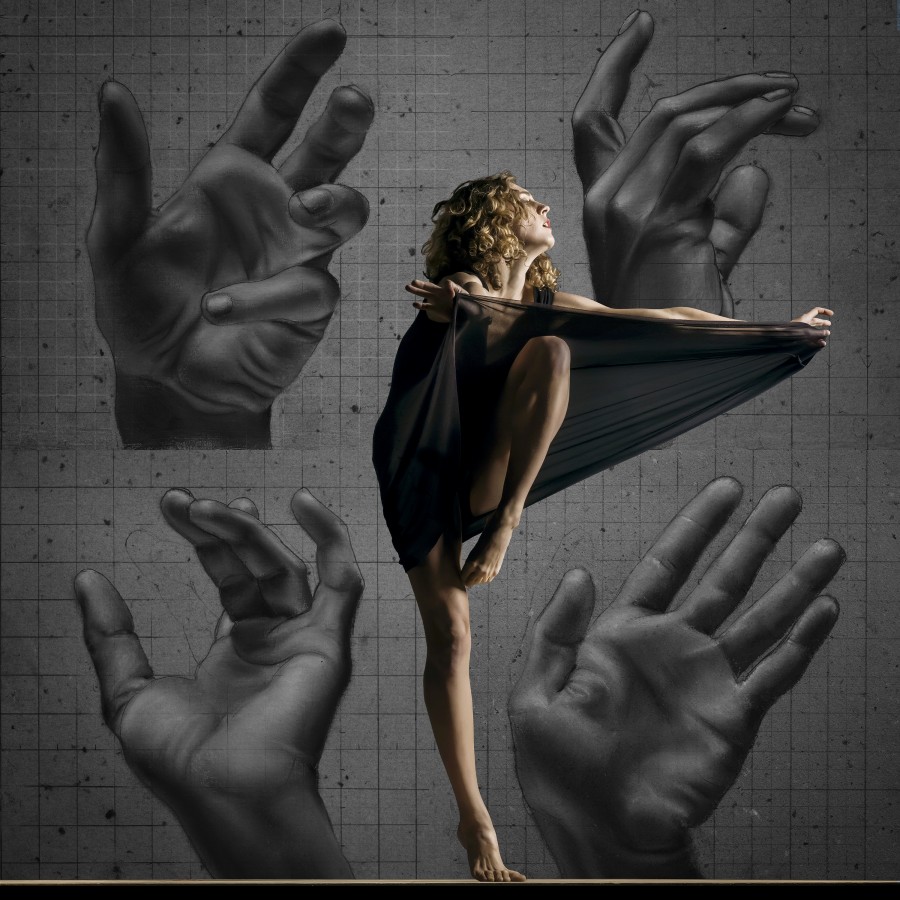
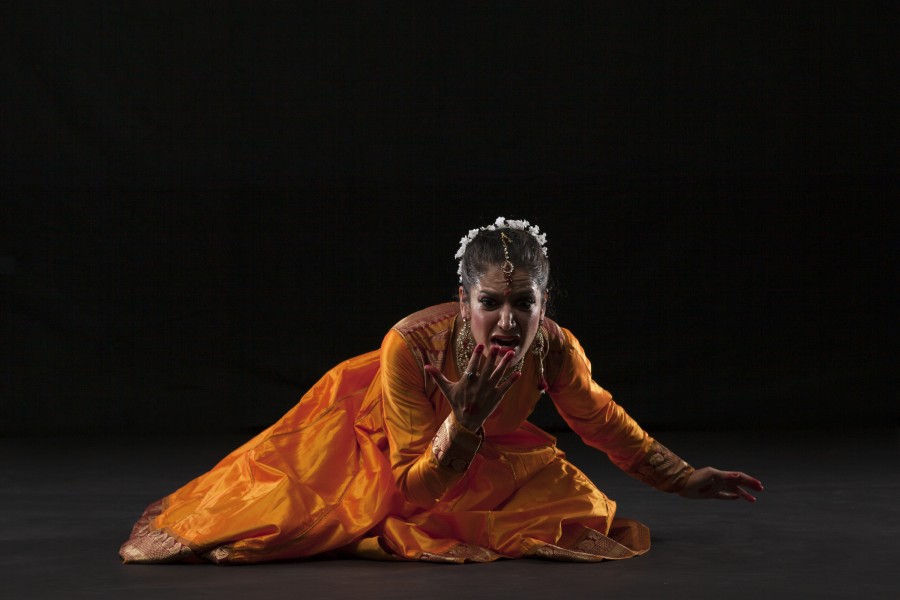

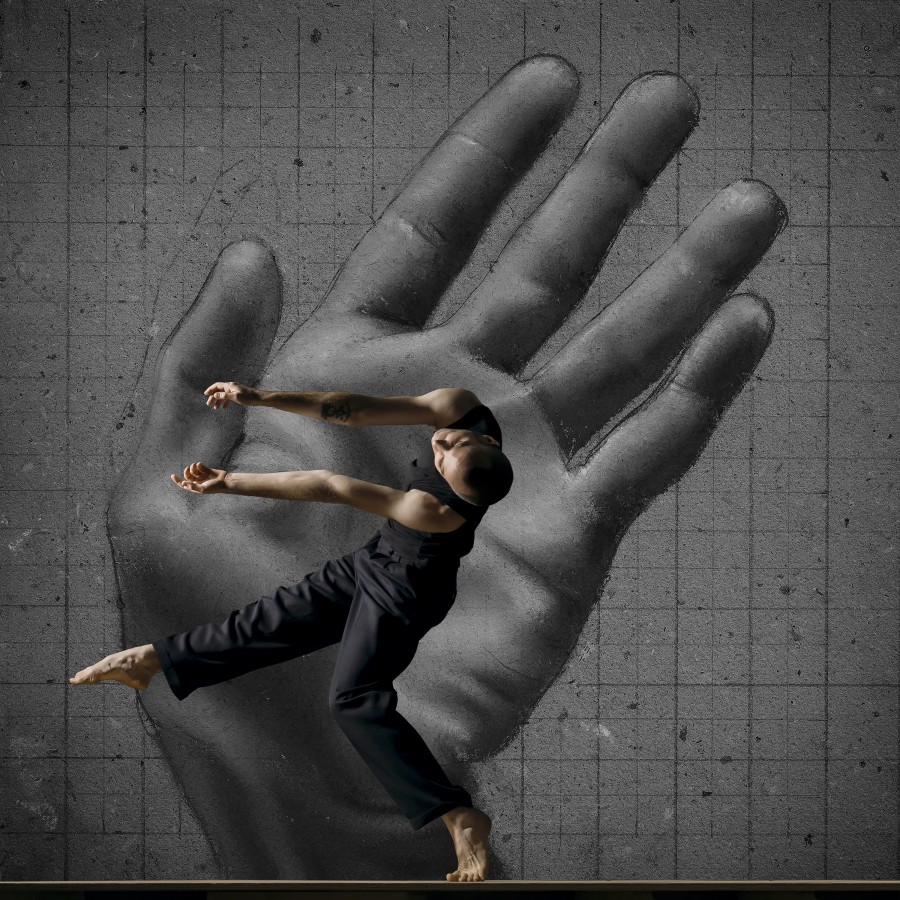
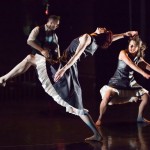
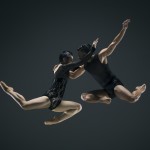


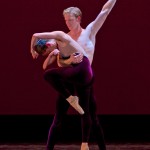

Please correct the name to Meerabai. There is plenty of information available on the internet that a writer should refer to before publishing.
Thanks for the heads up, Shree. This was indeed an oversight, sloppy editing. Normally we obsess over these details, but fell asleep at the switch on this one!
My apologies Shree, and thank you for letting us know. The printed program notes spell her name as ‘Meerabi.’ The other two mistakes were sloppy oversights on my behalf and, again, my apologies!
Neat perspective on Garrett + Moulton Productions’ “A Show of Hands” of viewing the ensemble lifts as the work of a hand, re: “…lifting individual members up as if the lifted body was the palm of a hand, and the carriers were the fingers.” I enjoyed the dancers’ skillful timing as an ensemble and their quick changes of direction in movements and phrases.
I agree with your positive remarks on the lighting design by Dave Robertson in Chitresh Das Dance Company’s “Excerpts of Bhakti: A Women’s Liberation through Love”. The performer’s dramatic, expressive storytelling was amplified by the changes in tone, texture and color of the lighting. I also appreciated the brief improvisation section between musicians and dancer prior to the performance. My, how they are masterful at rhythms!
Can’t wait to attend more performances by both companies.